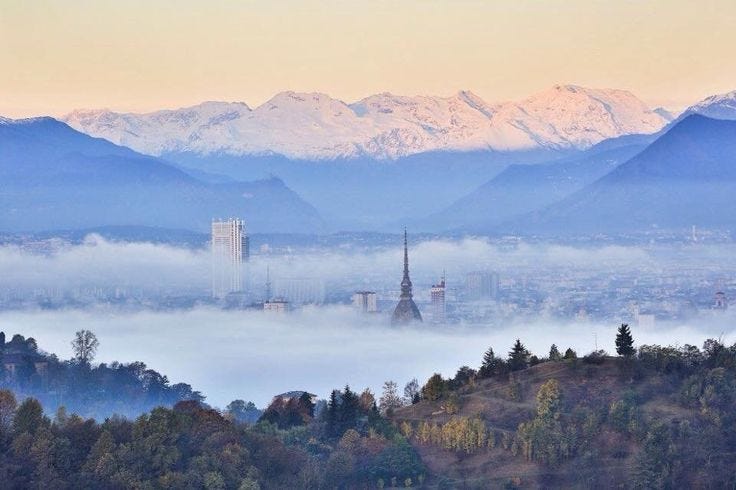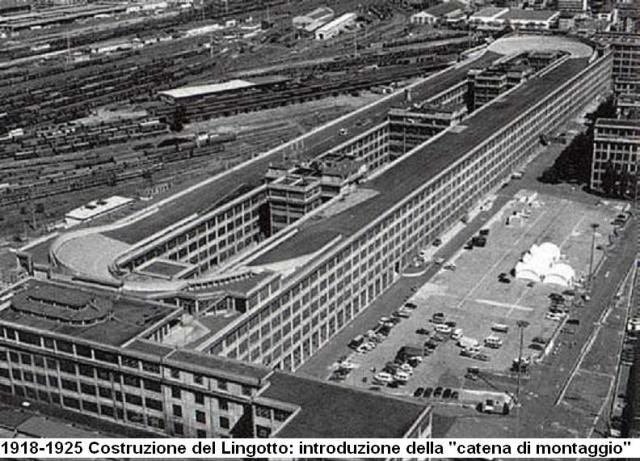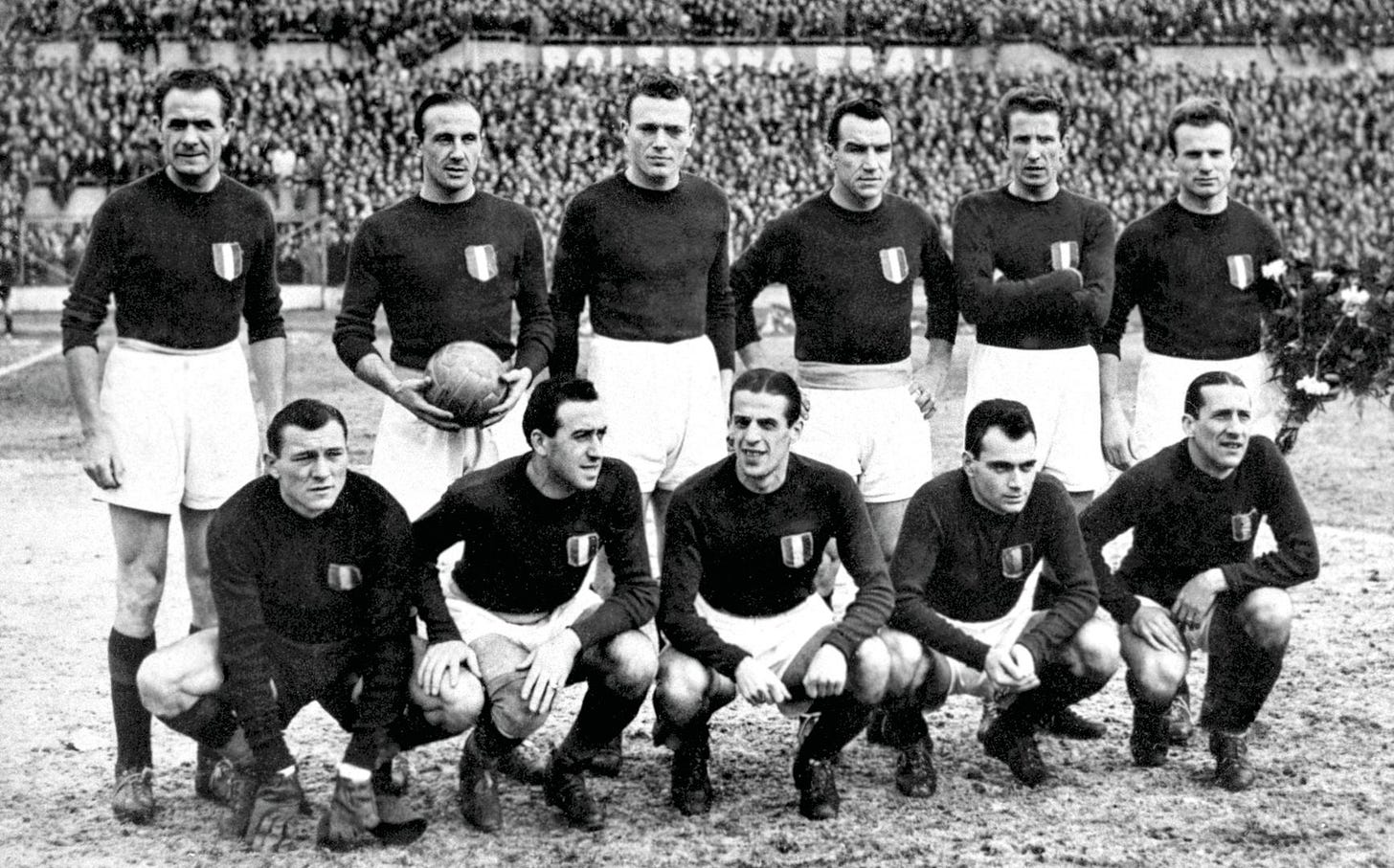The Footballing Clubs of Turin
An Exploration into Italian football history through Torino and Juventus
Brief Torino Talk
Like most, when I think of or envision Italy, I tend to visualize the packaged American vision I imagine most of us possess. This includes some combination of the Big Four: Venice, Rome, Florence, and Milan. Amongst Venice’s canals, Rome’s Colosseum, and any other romanticized or glamorized destinations, it would be difficult to envision one or even two iconic sites in Torino.1 It simply does not have the public relations campaigns of the other cities, is what I thought previously.
Only after a brief look in, I believe that keeping this place on the down low may be intentional. With the hordes of turisti that descend upon Italy’s big cities, it makes complete sense to keep quiet something for once and avoid crowds. In 2022, Rome saw over 29 Million tourists, exceeding that of the other ‘Big Four’ combined and is projected to have even more in 2025.2 In comparison, Turin received less than 4 million in 2022. While it might not get the plaudits from abroad, Torino is a historic city at the foot of the Alps that has served important roles in Italy’s history and culture. Before we put out a piece about the city and overall vibe, we must acknowledge and contextualize how historic Juventus and Torino are to the story of Italian Football. (more Torino travel coming soon!)

The Coupled History of Calcio and Italian Society.
Even as the first capital to the Kingdom of Italy and site to stunning Baroque architecture, the most popular and influential cultural artifacts given to Italy and the world by the Torinese, are Juventus, and with less than modern relevance, Torino FC.3 One cannot think of Italian football without the Bianconeri coming to mind due to continuous twentieth century success, early twenty-first century infamy, and then followed by more success. In the maroon half of Turin, the once giants of Italian football have fallen off fantastically and their successful periods being a thing of ancient history. In recent decades, Il Toro experienced bankruptcy, relegations, but has now sustained top flight football for ten seasons with minimal relegation flirtation. Despite the contemporary gap in prestige and form, Il Derby Della Mole is a intensely passionate matchup which highlights two historic clubs, a cities history, and the associated nostalgia of Calcio gone by.
Juventus, formed in 1897, existed briefly before Torino’s creation in 1906. These two clubs became foundational to the development of Calcio through memorable sides that defined eras of Italian football and society. Although their histories differ in many ways, their intertwined dramas ebbed and flowed throughout the twentieth century as a result of World Wars, Fascism, and the fall out of both. These football clubs etched their names forever in Calcio history by winning 5 Scudetti consecutively.4 Each experienced the highest of highs and the lowest of lows during the early periods of Italy’s professionalization of football.
Like most football origin stories, Italy’s football beginnings involve British expats, industry, and the upper echelons of society.5 The northern/industrial connection meant that wealth acquired through a growing industrial economy could find its way into footballing clubs. After Genoa and Udinese, Juventus is the third oldest club in the country. The experience of forming strong organization and structures prepared these clubs to progress alongside Italian society. Some clubs were more poised than others for the 1920’s Fascist push for more centralized sporting. The new sporting system hoped to aid development to projecting Fascist ideals of physicality and strength at home and abroad.
The fascists established the Italian Serie A in 1929/1930 the begin professionalizing and growing Calcio across the country. The success and hosting of tournaments promoted internationally the industrial, political, and ideological victories of Fascism’s implementation across Italy. The preparation and selling of Fascism through sport worked to create a sense of nationalism and unity. In her paper, Mazzuca uses the term ‘Sport Diplomacy’ to speak about the relationship between government, politics, and sport.6 Understood in a modern context, this ‘Sport Diplomacy’ can be closely associated with the fashionable term, “Sports Washing.” This ‘washing’ involves: 1. Governments who aim to improve their image, 2. Money, and 3. Sporting entities looking to host extravagant, profitable events. Today it is used to erase human rights abuses and promote tourism, but Italy’s hosting and winning of the 1934 World Cup succeeded in earmarking the country as a modern industrial powerhouse with strong a footballing culture to be admired.
The firm footballing foundations and culture established prior to the war bore fruit through success internationally, and after the war, Calcio began to mirror the decadence found in corners of Italian society. La Dolce Vita was the result of post-war economics transforming Italy into an actual industrial powerhouse. Italian companies began producing automobiles, films, fashion, and design on a larger scale, bringing outside praise to this celebration of economic prosperity.7 With FIAT financially backing the club, Juventus spent big by breaking a transfer record fee of 112 million Lira on Welsh forward John Charles and other high profile players.8 FIAT and the Agnelli backing was monumental to the early success of Juventus and continues to be well into the twenty-first century.

Juventus and Torino
The Agnelli family has been involved with Juventus for over 100 years and aside from owning the club, they have provided a total of four family members who served in the footballing side of things where they brought both trophies and glory to I Bianconeri. The hugely important connection between industry and Calcio was made by the Agnelli’s on July 4th, 1923 when the 22 years old, Edoardo Agnelli, son of FIAT founder Giovanni Sr., became president of Juventus Football Club. Edoardo served for twelve years bringing a total of six Scudetti by 1935.9 The five consecutive titles earned that Juve side the nickname, ‘il quinquennio d'oro,’ and brought newfound stature and plaudits from throughout Italy and Europe.10 The celebrations were brought to a screeching halt weeks after the 1934/1935 season when the news of Edoardo Agnelli’s death spread.11 Juve’s President died in a one manned plane crash on a return from business in Genoa.12 Juventus didn’t win another trophy for 7 years, and didn’t win another Scudetto for 15. His presence is still felt at Juventus because of the close ties forged by him, his family, and the 1930’s Juventus sides he assembled to scale the peak of Italian Football.13 If Juve is symbolic of economic success and industrialists, then what does Torino FC symbolize?
Following the Azzurri 1938 title defense, the breakout of WWII caused major issues beyond football. A focus on Allied bombing raids relegated Calcio to the sidelines and a suspension of normal league play. Being deemed good for morale, the football did go on, however, in a more regional and logistically feasible competition during the on going war. In the post-war years, it was the Maroon half of Torino that celebrated almost unrivaled success winning five Scudetti consecutively, earning the name, Il Grande Torino.
From the working class neighborhood of Filadelfia, it was Torino who was the ‘People’s team’ who represented workers of an industrial city, in a time where heavy bombing and hardship occurred. For the Torinese who experienced and struggled during the war, the increased importance of a team like Il Grande Torino can be understood.14 These sides brought absolute joy to fans and spectators by scoring loads and loads of goals. On Chris Lee’s podcast, The Outside Right, Lee speaks with Roberto Pennino, author of Immortal Torino: How the Superga Air Crash Robbed Italian Football, all about the side and how they came to be historic champions.15 With a legendary striker like Valentino Mazzola, Torino’s brand of football created countless opportunities, but the team could also get stuck in and eek out victories like only the best sides can. But the goal scoring was prolific! For example, in the 1947/1948 season, Torino finished the season with a goal differential of +92, scoring 125 goals and only allowing 33 goals.16 It was truly a spectacular time to support I Granta, almost too good to be true.
Almost 14 years after Juve’s Golden Five-Year Period was interrupted by the death of President Agnelli, another plane crash took the lives of Il Grande Torino at the height of incredible, era defining success. A friendly took place because of a friendship between Benfica midfielder, Francisco Ferreira and Torino captain Valentino Mazzola. The game was to occur at the tail end of the Italian season, in Lisbon to honor and celebrate the career of the retiring Ferreira. Through some schedule maneuvering with the Federation, Torino were granted permission to play in front of the 40,000 in Estadio Nacional.17 On the return to Italy via Barcelona, the team met horrid flying conditions en route to Milan. Either the weather or equipment malfunctions caused the aircraft to lose its way and crash into the iconic Basilica atop Superga Hill near Turin.
The importance and history of that hill top dates back to 1706 when a Franco-Spanish invasion prompted leaders to climb the hill to strategize a plan. Unlike Duke Vittorio who sought salvation on the hilltop, all passengers and crew aboard perished upon impact including, Il Grande Torino and three of Italy’s most popular journalists; Renato Casalbore (founder of Tuttosport,) Renato Tosatti, and Luigi Cavallero.18 After 36 games, the season still had four games and Torino were a comfortable four points ahead of Inter. The remaining games were played by two first team members, unable to make the Lisbon trip, and the rest were youth players. I imagine the psychological experience of each is difficult and complex to fathom. For the two veterans, all of their teammates and friends have died in a horrific disaster, and YOU remain, possibly living and carrying the guilt of surviving.19 For the youth, the heroic, Quattro Scudetti winning side suddenly vanishes and the shirts of your heroes and idols are thrust upon you in the most crucial point of the season. The burden was slightly lifted when opposing teams honored Il Grande Torino by also fielding youth players.20 Torino FC finished on 60 points, 5 ahead of Inter to lift the trophy, honoring and immortalizing Il Grande Torino in the history of Italian Calcio.
The irony of the loss is honestly sickening. How different could Calcio have been if the entire squad hadn’t passed? They were the darlings of Italy and for some of the Azzuri matches, Torino made up 10 of the 11 players.21 Juventus ended up winning the post-disaster 1949/1950 season and went on to be THE top side in Italy for the remainder of the century winning at home and across Europe. Since the Superga Air Disaster of 1949, Torino FC has won just one Scudetto (1976,) and their last Coppa triumph came in 1993 against AS Roma after defeating Juventus in the semifinals. Il Grande Torino and those who died are still remembered and mourned each year on May 4th where a ceremony takes place atop Superga Hill. 22
No offense. By the way, I will use the footnotes as a space to not only cite my sources, but as a running commentary on things that either didn’t fit the piece but is still relevant.
https://www.statista.com/statistics/1092713/leading-municipalities-in-italy-by-overnight-stays-in-tourist-accommodations/
2025 is set to host an estimated 35 Million tourists for the Vatican Jubilee. https://community.ricksteves.com/travel-forum/italy/2025-vatican-jubilee-an-estimated-35-million-pilgrims-expected
https://www.iubilaeum2025.va/en.html
FIAT and Nutella are close.
Inter would emulate the feat in the 2006-2010 seasons where they capped it off with a Treble win. Forza Inter. Forza Inter Siempre.
Even now, Juventus is owned by the Agnelli family and recently chaired by Andrea Agnelli, the latest in a long line of Agnelli’s to lead Juventus in a major capacity. The Agnelli family has been involved with owning and operating Juventus for over 100 years and while they have not always had an official or active role, the success of FIAT and their business acumen allowed Juventus a foundation, structurally and financially to stabilize at the top of Italian football and push higher. Edoardo, Gianni, Umberto, and most recently Andrea, each with their own eras, stories, and successes.
https://ir.lib.uwo.ca/cgi/viewcontent.cgi?article=12271&context=etd
https://thesefootballtimes.co/2017/09/15/john-charles-the-gentle-giant-who-became-the-greatest-import-in-juventus-history/
FIAT, a symbol of Italian rebirth made the automobile affordable and appealing to the growing middle class, seeing a rise in productivity and profits. This was occurring across various sectors of Italian industry bringing a raised standard of living for some. Popularized by Federico Fellini’s film of the same name, “La Dolce Vita,” highlighted the glamour and excitement of Italy’s post-war booming economics of the north. Although glamorized and romanticized, this period for areas outside the '“Industrial triangle” were difficult (Turin, Genoa, Milan.) Much of the south lacked in equal economic opportunities than that of their northern counterparts. More agricultural in the south and industry largely focused in the north. A large internal migration of southerners, a large part being Neapolitan, fled north for economic opportunities not available in the south. Racism ensued. Even today, Juventus fans may be heard signing anti-Neapolitan songs or slogans. The success of Diego Maradona in the city of Napoli is so historic because he put the city in a positive light that wasn’t stained with the usual negative imagery associated with late twentieth century Naples. John Charles sidebar: (After scoring 38 goals in England’s top flight, Leeds initially refused to sell, but a fire in Leed’s West Stand demanded repairs and Charles’ sale would aid in restoration.)
https://www.juventus.com/en/news/articles/the-agnelli-family-and-juventus-a-century-of-love
“The golden five-year period”
https://www.uefa.com/news-media/news/0211-0f8a3784bcae-0bf126de12d1-1000--juventus-achieve-116-year-first/
https://www.juventus.com/en/news/articles/we-remember-edoardo-agnelli
https://www.uefa.com/news-media/news/018d-0f8447928a82-7b74dc12e2b7-1000--juventus-mourn-passing-of-agnelli/
Along with dominating domestic football, Juventus supplied 9 of the 22 man squad for the 1934 World Cup, hosted by Italy. 5 were starters with 3 having over 40 caps for the Azzurri.
https://lowerblock.com/articles/torino-fc-deep-devotion-and-identity/
https://www.epoch-magazine.com/post/turin-under-the-bombs
https://outsidewrite.co.uk/il-grande-torino-and-the-superga-air-disaster/
Valentino Mazzola Highlights, kinda.
https://www.torinofc.it/en/storia/tragedy-superga
https://www.torinofc.it/en/storia/tragedy-superga
Conjecture at this point, but I know that’s how I would feel.
https://www.theguardian.com/sport/blog/2009/may/04/serie-a-grande-great-torino-superga
https://www.theguardian.com/sport/blog/2009/may/04/serie-a-grande-great-torino-superga
The Basilica still stands and is located less than 10km from the Torino city center and is accessible by a funicular. Keep a look out for a piece about Torino Travel! https://turismotorino.org/en/visit/plan-your-trip/getting-around/cremagliera-tranvia-da-sassi-superga-gtt







